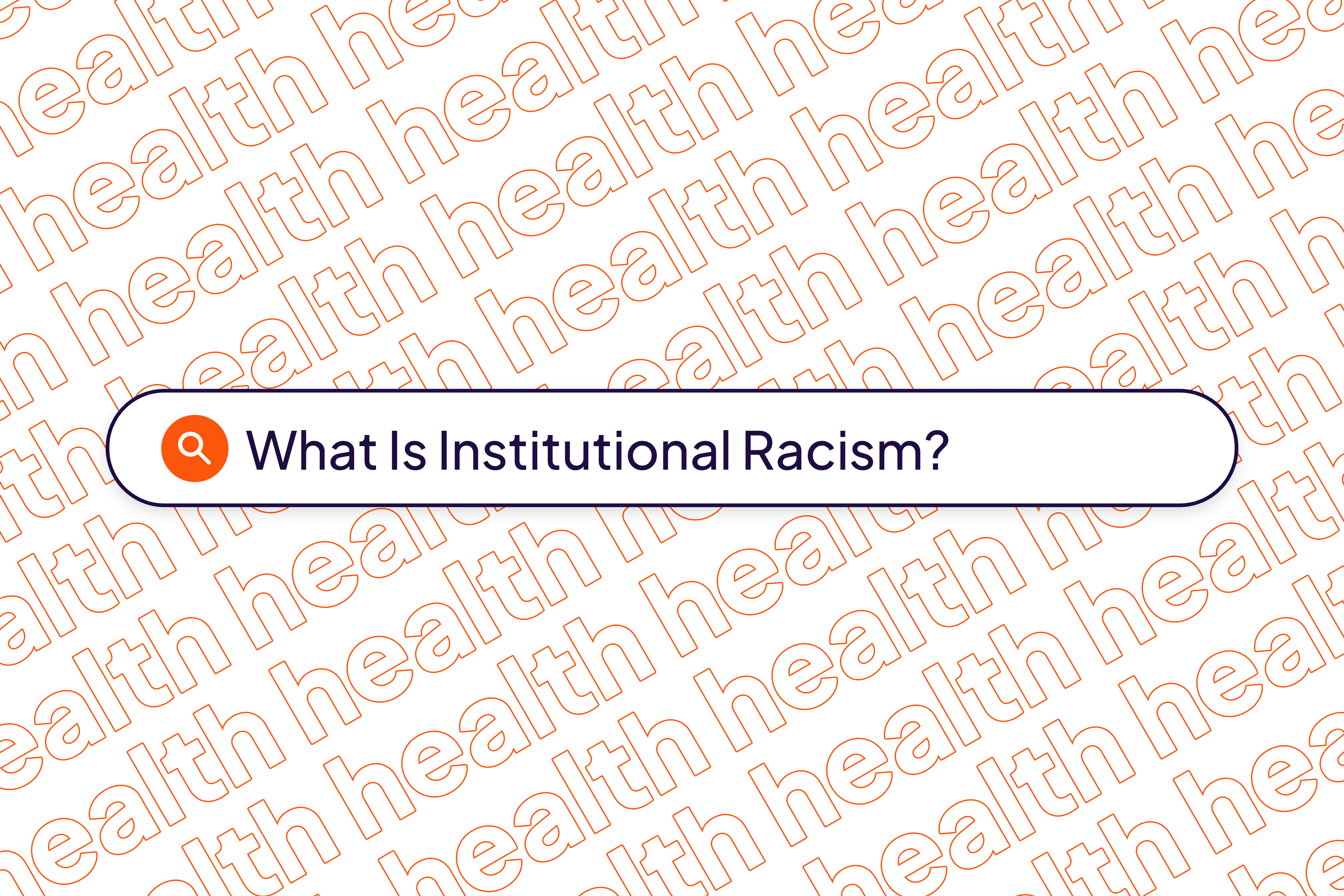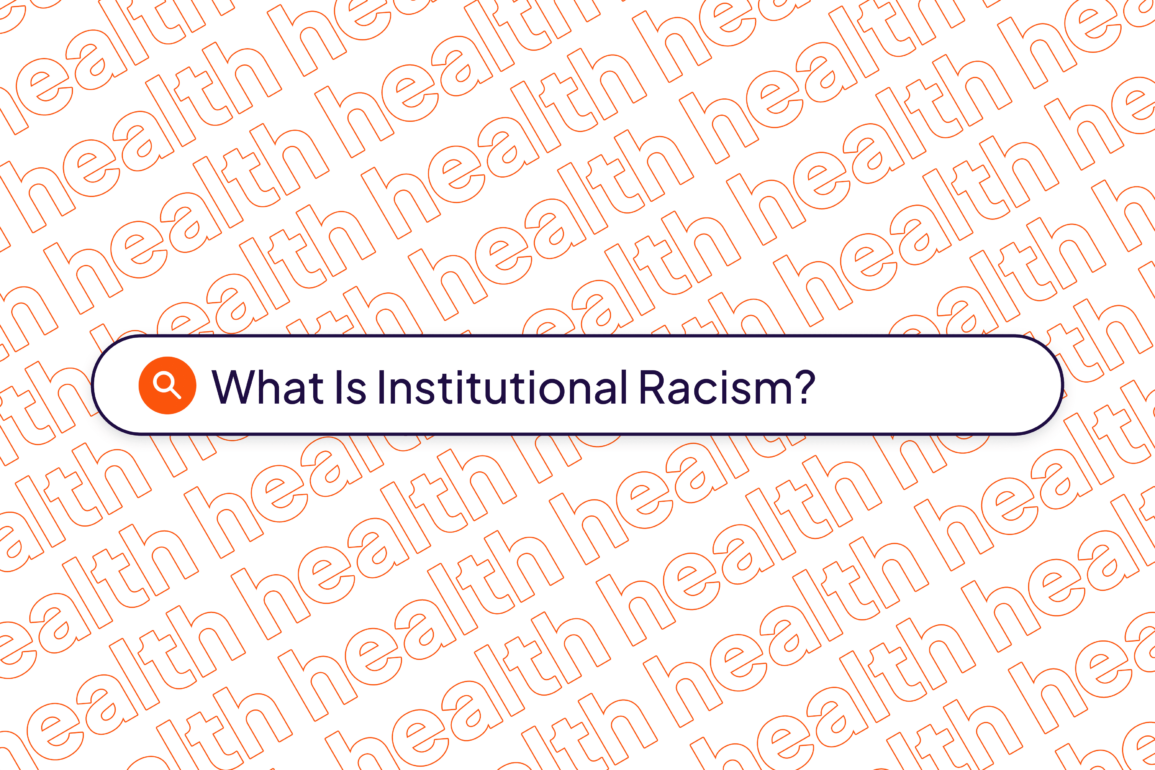
Institutional racism is everywhere, from healthcare to housing to education to employment. Examples of institutional racism include instances of police brutality, reduced funding for predominantly Black schools, as well as racial gerrymandering.
The impact of institutional racism is far-reaching and a vicious cycle that takes a toll on people and society. Here’s an overview of the historically prevalent discrimination that affects the Black community.
Policies and power structures rooted in White privilege maintain institutional racism, or systemic racism. Interpersonal racism shows up in biases for and against others based on race. Institutional racism, in contrast, is embedded into the structures of society. It leads people of different races to have different outcomes regarding housing, employment, health, finance, and education.
“Institutional racism is different and more implicit than interpersonal racism. It’s come to the forefront of the national conversation after the murder of George Floyd and the protests for racial equity across the country [in 2020],” Beth Beatriz, PhD, a researcher specializing in health equity, told Health.
Legal segregation and Jim Crow laws previously publicly encoded institutional racism across the country. Modern policies and signage don’t frequently identify institutional racism, but biases in favor of White people still exist in coded forms. These restrictions often have an unfair outcome in Black communities.
“Declaring certain hairstyles ‘unprofessional’ historically restricted qualified Black candidates from gainful employment,” Nance Schick, an attorney and mediator based in New York, told Health. “Despite the CROWN Act of 2020 [which prohibits discrimination based on hair texture or style], there are still employers who have restrictions on hair, particularly dreadlocks and natural hair.”
Institutional racism is prevalent in the United States across just about every sector. You may see examples of institutional racism in education, health, policing, and more.
Education
School funding based on property values and residential taxes, combined with racial segregation in housing, has led to systemic underfunding of predominantly Black schools. Low-poverty districts that are primarily White spend almost $2,000 more per student than low-poverty districts where most students are people of color. This often results in poorer test scores and learning outcomes for Black students at underfunded schools.
Health
The U.S. healthcare system has historically discriminated against non-White populations. Many healthcare facilities that predominately serve Black communities lack the funding, resources, and staff to deliver adequate healthcare. Poor healthcare services lead to adverse health outcomes.
Black women are as much as four times more likely than White women to experience a pregnancy-related death in the United States. Research has found that inadequate access to prenatal healthcare raises the risk of maternal mortality, in addition to healthcare providers’ racial biases.
The COVID-19 pandemic also highlighted inequities in the U.S. healthcare system. Lack of access to healthcare services, such as COVID testing, led to a disproportionate number of infections and deaths among minority groups. Research has shown that COVID outcomes among non-White populations directly result from racist U.S. healthcare policies.
Housing
Where a person lives and the conditions of their neighborhood greatly impact their health outcomes.
Residents of impoverished neighborhoods demonstrate a high risk of poor physical and mental health outcomes, such as:
“The historical practice of ‘redlining’ is an example of a racist institutional policy still felt today,” said Beatriz. Redlining happened when banks refused to lend money for mortgages in communities with large proportions of people of color. The banks considered these communities to be “hazardous.”
The effects of redlining have persisted, despite it being outlawed in 1968. The Urban Institute reported in 2017 that the homeownership rate for White households was 71.9%. The rate for Black households, in contrast, was 41.8%.
This racial residential segregation is the cornerstone of Black and White disparities. “The inequities built into low-income housing is a fundamental cause of health disparities between [Black and White people],” Marsha Parham-Green, the executive director of the Baltimore County Office of Housing, told Health.
“Concentrated poverty, safety, and segregation, as well as other social and community attributes, further contribute to stress and deterioration of health,” said Parham-Green. “Those who are most vulnerable—children and the elderly—are most adversely affected by unstable housing conditions.”
Law and Policing
Black people are roughly five times as likely as White people to report being unfairly stopped by the police. Black Americans are also more likely to suffer the ill effects of racial profiling. Racial profiling is stereotyping a person based on assumed characteristics of a racial or ethnic group rather than the individual.
Police brutality is an ongoing problem in the United States, disproportionally affecting Black communities. Black people face an adverse risk of poor health outcomes as a result, such as:
- Death from injuries sustained by the police
- Health complications that increase the risk of death
- Stress
- Unfair arrest and incarceration
Finance
Economically-based discrimination goes hand-in-hand with interpersonal racism. Business loan officers may require Black applicants to have higher credit scores and income levels than White applicants. This discrimination may become an example of institutional racism if it’s widespread.
An investigation in 2018 by the National Fair Housing Alliance found economic discrimination regarding car loans. Non-White applicants who experienced discrimination would have paid an average of $2,662.56 more over the life of the loan than less-qualified White applicants. The investigators also found that White applicants were offered more financing options than non-White applicants 75% of the time.
Politics
Some state elected officials denied early and mail-in voting for non-White voters. Black voters’ ballots in North Carolina were rejected at more than three times the rate of White voters during the 2020 U.S. general election.
The U.S. Postal Service also removed hundreds of sorting machines, a form of institutional racism. “Mail delivery was slowed down, and residents over-indexing with a Black population couldn’t get their mail,” Lauren Raysor, an attorney and founder of the Mount Vernon Coalition for Police Reform, told Health.
Another form of institutional racism in politics is gerrymandering. Gerrymandering determines electoral districts, which decide the outcomes of state and federal elections. There’s one U.S. representative from each district. Census data, which the U.S. government collects every 10 years, influences redistricting.
Racial gerrymandering happens when people in positions of power redraw district lines to suppress minority voices. Take, for example, a community largely made up of Black voters. The likelihood of Black voters being accurately represented decreases if lawmakers gerrymander that community into several districts.
Institutional racism hurts society, squashing innovation and creating an environment that breeds unhealthy stress and burnout. Those affected will continue to be a part of a cycle of despair and disenfranchisement if institutional racism continues as the status quo.
“Black Americans who call out institutional racism are often gaslighted,” La Shawn Paul, mental health expert and diversity and inclusion strategist, told Health. “To address any problem, you must first acknowledge its existence. Silence is complacency.”
According to Schick, people can combat institutional racism by making the following changes:
- Don’t stop with one Black friend and think you know enough about the Black experience. One person does not represent an entire group of people.
- Go to town halls, school board meetings, and other places where people are discussing solutions. Protests and books are great for creating awareness. But then, it’s time for solutions at every level.
- Speak up when you see changes that can be made. Sometimes, the change is in a policy. Other times, change is as small as an individual’s behavior.
“It’s getting harder for all of us to claim ignorance. It’s time to make a change,” said Schick. “Perhaps that is where it begins, with pure intention. Adding courage and action, big changes can occur. We likely have to do some deep soul-searching first and accept that it will be uncomfortable. Nevertheless, this is where we must begin. Again.”
It’s not as obvious as in previous generations, but institutional racism affects people of color profoundly. Examples can be as subtle as a lack of spending on public schools in economically disadvantaged areas serving minorities.
Institutional racism is pervasive and can affect every aspect of peoples’ lives, from their finances to their education and physical and mental health. The best way to fight institutional racism is to become aware and active in changing the policies and behaviors perpetuating it.



